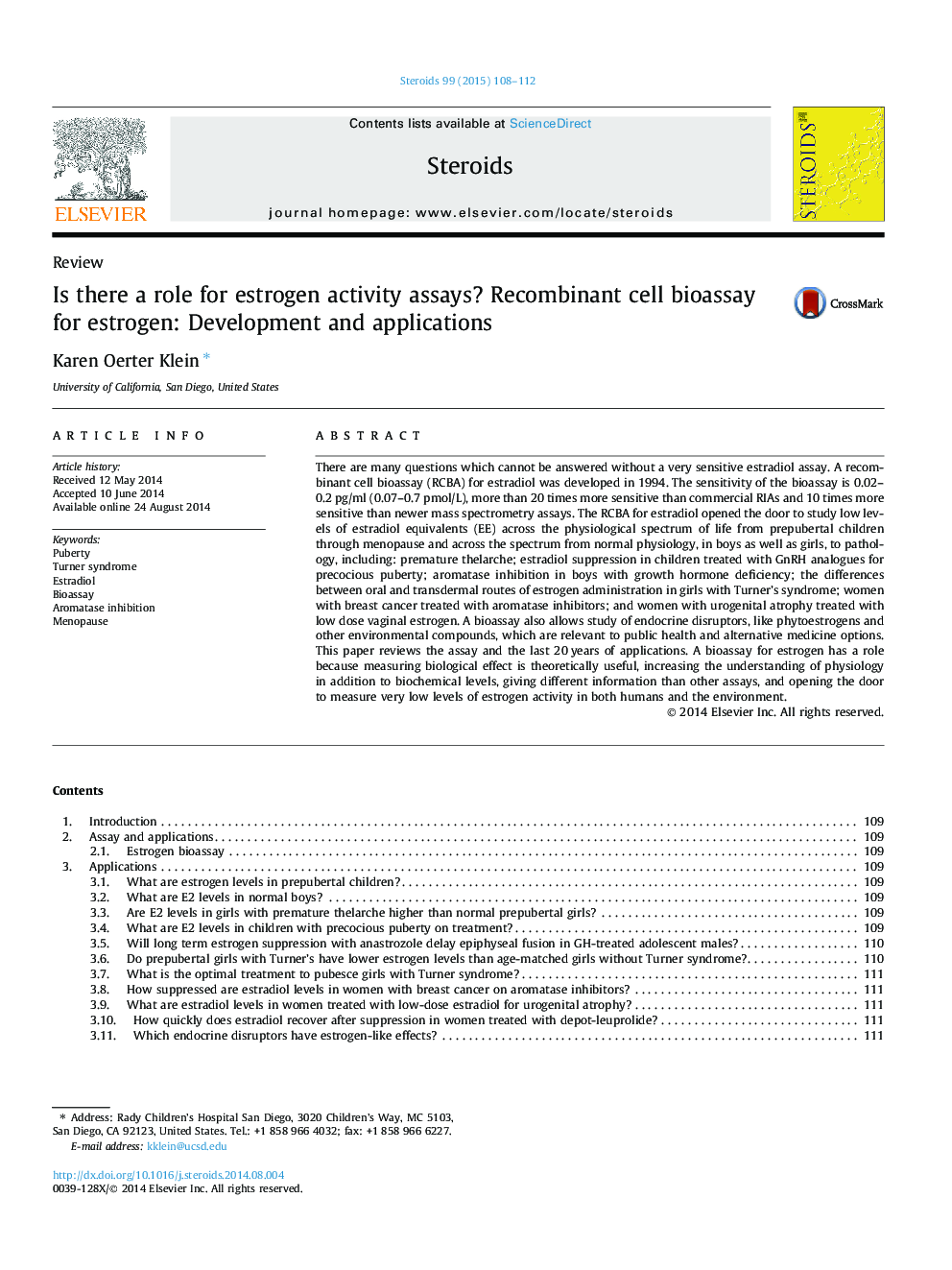| Article ID | Journal | Published Year | Pages | File Type |
|---|---|---|---|---|
| 10847688 | Steroids | 2015 | 5 Pages |
Abstract
There are many questions which cannot be answered without a very sensitive estradiol assay. A recombinant cell bioassay (RCBA) for estradiol was developed in 1994. The sensitivity of the bioassay is 0.02-0.2Â pg/ml (0.07-0.7Â pmol/L), more than 20 times more sensitive than commercial RIAs and 10 times more sensitive than newer mass spectrometry assays. The RCBA for estradiol opened the door to study low levels of estradiol equivalents (EE) across the physiological spectrum of life from prepubertal children through menopause and across the spectrum from normal physiology, in boys as well as girls, to pathology, including: premature thelarche; estradiol suppression in children treated with GnRH analogues for precocious puberty; aromatase inhibition in boys with growth hormone deficiency; the differences between oral and transdermal routes of estrogen administration in girls with Turner's syndrome; women with breast cancer treated with aromatase inhibitors; and women with urogenital atrophy treated with low dose vaginal estrogen. A bioassay also allows study of endocrine disruptors, like phytoestrogens and other environmental compounds, which are relevant to public health and alternative medicine options. This paper reviews the assay and the last 20Â years of applications. A bioassay for estrogen has a role because measuring biological effect is theoretically useful, increasing the understanding of physiology in addition to biochemical levels, giving different information than other assays, and opening the door to measure very low levels of estrogen activity in both humans and the environment.
Related Topics
Life Sciences
Biochemistry, Genetics and Molecular Biology
Biochemistry
Authors
Karen Oerter Klein,
